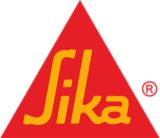General Installation Instructions
R-Matte Plus-3 must be separated from the interior side of the building by a suitable thermal barrier or ignition barrier when require. Refer to the Local Building Official for general exceptions and specific governing codes and requirement. Consult Rmax® for special testing and exceptions on thickness of 1" or less.
All material installed over R-Matte Plus-3 (thermal barrier, ignition barrier, furring strips, interior finishes, veneers, roof systems, etc), must be mechanically attached through the insulation to the framing/structure according ot he building code.
Walls and Ceilings
Attach insulation boards to framing or other finished surface. Staring at one corner/edg, install boards continuously and tightly abutted to cover entire surface.
- Where insulation is cut to accomodate penetrations, voids and gapping should be minimized. Voids and gaps can be filled and sealed using a high quality insulation sealant/adhesive such as Sikaflex®-709 Insulation Sealant & Adhesive.
- When using using an adhesive such as Sikaflex®-709 Insulation Sealant & Adhesive, to secure boards, apply the adhesive to the finished surface. Press/hold the board firmly until adhesive is set.
- When using mechanical fasteners to secure boards, use fasteners with sufficient length to penetrate framing or finished surface (minimum ¾" in wood or minimum 29/64" into steel). Use a minimum of eight fasteners, spaced evenly throughout the board.
- Where multiple rows or layers of insualtion exist, stagger joints.
When using these boards as a vapor retarder, Water-Resistive Barrier (WRB) and/or the air barrier, the following measures must be taken to ensure a complete barrier: All insulation joints, as well as any breaks or other damamge to the face in the insulation but be sealed with a pressure sensitive tape, such as SikaSeal®-148 Insulation Seam Tape or equiivalent.
- All perimeter edges, transitions and fenestrations shall be sealed to the exterior face of R-Matte Plus-3 with appropriate flasing including, but not limited to, exposed foam edges, wall to floor, and wall to roof transitions, windows, doors, etc.
- All penetrations amde through the exterior plane of the WRB and/or air barrier shall be sealed using tape, flasing, caulk, or other water/air sealing method.
Floors and Below Grade
Attach insulation boards to finished surface.
- Install R-Matte Plus-3 over specially prepared based of crushed stone for slab on grade constructions or on existing slab for floor and radiant floor slab constructions.
- Starting at one corner/edge, install boards continuously and tightly abutted to cover entire surface.
- Where insulation is cut to accomodate penetrations, voids and gapping should be minimized. Voids and gaps can be filled and sealed using a high quality insulation sealant/adhesive such as Sikaflex®-709 Insulation Sealant & Adhesive.
Roofs
Attach insulation boards to suitable roof deck (tongue-and-groove timber, plywood, or metal deck).
- Secure boards to roof deck with enough fasteners to hold it in place until the nailing surface or roof cover system is attached through the insulation to the deck.
- Starting at one corner/edge, install boards continuously and tightly abutted to cover entire surface.
- Where insulation is cut to accomodate penetrations, voids and gapping should be minimized. Voids and gaps can be filled and sealed using a high quality insulation sealant/adhesive such as Sikaflex®-709 Insulation Sealant & Adhesive.
- When using mechanical fasteners to secure the boards, use screw and plate type fasteners with sufficient length to penetrate the deck (minimum 1" into wood or minimum ¾" into steel).
It is strongly recommended to follow the guidelines of the National Roofing Contractors Association (NRCA) when it comes to the use of a vapor retarder in any insulated roofing assembly, as well as its location within the system.


















